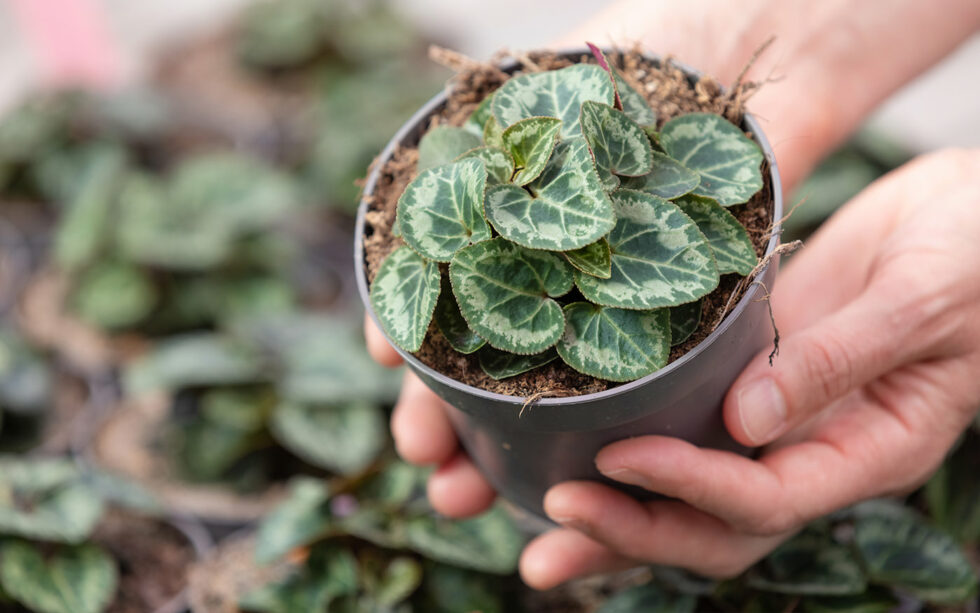Developing resilient plants is a ‘trial-and-error’ process
With an increasing focus on environmental and climate challenges, along with a global reduction in available plant protection products, there's growing attention on creating resilient plants.
On this page:
Jantineke Hofland-Zijlstra, a researcher and advisor in plant resilience, sheds light on this, demonstrating that resilient plants can yield many benefits, and controlled release fertilizers (CRF) play a key role in achieving this.
Understanding plant resilience
Plant resilience is a hot topic worldwide, partly due to the rising environmental and climatic concerns. Additionally, in many countries, there are fewer plant protection products available to control diseases and pests. “This compels growers to explore ways to make their plants more resilient, especially knowing that the use of plant protection products will be further restricted in the future,” says Jantineke Hofland-Zijlstra from Dutch company ‘Weerbare Plant’ (meaning ‘resilient plant’), that specializes in plant health and resilience research.
Strong growth and stress resistance
What exactly constitutes a resilient plant? As the name implies, a more resilient plant is better equipped to handle stressful environmental conditions, such as rapidly changing climate, nutritional and substrate conditions, diseases, and pests. “At the same time, the plant exhibits robust growth. Stress resistance and good growth go hand in hand,” explains the expert. “It’s often thought that working on resilience comes at the expense of growth or production, but that’s not necessarily the case. Often, this approach actually benefits crop growth or production. In short, a resilient crop helps reduce the use of plant protection products, thus lowering the environmental impact, without sacrificing yield. This creates a sustainable outlook for your business.”

Stress resistance and good growth go hand in hand: a well-developed cyclamen plant
CRF contributes to plant resilience
According to Jantineke, controlled release fertilizers (CRF) can contribute to better plant resilience. “When a plant receives too many nutrients at once, it grows too fast and lush, making it more susceptible to diseases and pests. This is the case, for example, when the crop receives an ‘overload’ of nitrate. This issue can be prevented by releasing nutrients in a controlled manner, as is the case with CRF products. Additionally, nutrients do not leach out too quickly and remain available to the plant for longer periods. This strengthens the plant and enhances its resistance to stress factors.”
Jantineke also believes that the coating around CRF granules, which gradually breaks down, stimulates the development of beneficial soil fungi. “And such fungi are capable of breaking down organic plant residues, making even more nutrients available to the plant.”

Jantineke Hofland-Zijlstra, a researcher and advisor in crop resilience
Focus on enhancing root systems
To achieve a more resilient crop, growers should start with improving root development, the expert emphasizes. ” “Developing dense, fibrous roots allows plants to efficiently absorb nutrients and more easily combat stress from disease and pests.”
Improving and strengthening the root system can be done in various ways, such as by adjusting the physicochemical properties of the substrate. It is important that the substrate can retain sufficient water while being ‘airy’ enough and containing enough oxygen.
Plants on a ‘resilience’ diet
Additionally, providing a balanced and healthy diet, with a greater variety of nutrient elements, contributes to a stronger root system. “This diet should ideally contain all elements from the so-called ‘Wheel of Resilience’,” says Jantineke. “It’s important to strike a good balance between nitrogen-rich nutrient sources, necessary for plant growth, and carbon-rich nutrient sources, which contribute to resilience. Besides nitrogen, other elements such as phosphate, potassium, calcium, iron, and manganese are also important.”
To further enhance plant resilience, the mentioned diet can be supplemented with fiber-rich products, which contain more decomposed plant residues (and carbon compounds). “These could be biostimulants, containing, among other things, algae and seaweeds, humic and fulvic acids.”
Trace elements and microbes
An additional advantage of products rich in carbon compounds is that they are generally also rich in trace elements, according to Jantineke . These include boron, molybdenum, iron, copper, zinc, manganese, and magnesium. “These are elements that need to be present in small quantities to allow the crop to grow and function properly. Additionally, trace elements can help improve root development and thus plant resilience. Trace elements like zinc stimulate the production of various plant hormones. For example, the plant hormone auxin benefits root development.” Furthermore, adding fungi and bacteria can be useful in stimulating resilience further. “Such microbes are important in converting nutrients, such as nitrogen, phosphate, and iron. This makes nutrients more available to the crop.”
Building a foundation in soil
Expert Jantineke advises growers to first assess which beneficial fungi and bacteria are already present in the soil before applying products. “By activating fungi like Trichoderma or plant growth-promoting bacteria – such as Pseudomonads or Bacillus species – growers can already take significant steps towards enhancing plant resilience. Such fungi and bacteria promote plant growth and, as mentioned earlier, help make nutrients more available to the plant. They also play a role in parasitizing harmful insects and increasing competition in the soil, reducing the chance for pathogens. However, to allow good fungi and bacteria to thrive, the physical foundation of the substrate must first be in order.”
Side effects of crop protection products
Finally, the advisor emphasizes that crop protection products can also contribute to root development and thus to crop resilience. “Crop protection products are primarily used against diseases and pests, but they also indirectly stimulate various other plant processes and the development of the root system. If you stop using these products, you also miss out on these effects. It’s important to be aware of this and understand the exact side effects of crop protection products. This way, you can use an appropriate alternative that fulfils the specific function of the crop protection product.” Jantineke further advises to closely monitor the effects of products when choosing a specific ‘plant diet’: “Take samples and measure what a product does to the soil, root growth, and plants. This way, you can be sure that what you’re doing and investing in is actually effective.”
Changing perspectives
Although more and more growers are focusing on resilient farming, according to the researcher, there’s still a lot of work to be done. “It requires a whole different approach; growers really need to think differently. And the right strategy varies greatly per farm and involves a learning curve. Every entrepreneur needs to experiment, learn, and experience what works best for their crop. Achieving a resilient crop is a trial-and-error process.”



